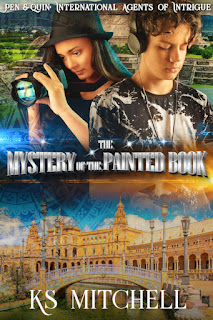Shards of Light by Susan Miura
Review by H. Schussman
Reader’s POV:
Miura pulls the reader through two young ladies’ lives…
exciting adventure and heartbreaking tragedy. Each must learn from their
situations.
Shilo has inherited her great-grandmother’s gift of healing.
This gift is fragile and powerful. Shilo has to learn when to use it and how to
make sure she gives credit where credit is due—God. Her time in Sicily is an
opportunity to learn from Nonna Marie and to become embroiled in yet another
life and death adventure.
Back home, Melody watches her most cherished dreams as a
ballerina crash about her damaged body. Her struggle from anger and self pity
to acceptance and new dreams is both painful and encouraging to read. Amidst
this is her desire to learn who her biological mother is without hurting her
sweet real mother.
Best friends, Shilo and Melody grow in maturity, faith, and
womanhood. They both learn what true romance is with their respective
boyfriends.
Writers POV:
This is a fast read… a page turner. The language of the young
adults is modern and relevant, yet the writing is clean and almost poetic at
times. Miura masterfully describes the scenery, action, and emotional angst.
Here’s some random favorites:
* “Can I go with you?” His [a little boy]
hope-filled eyes stare as though a blink might ruin the possibility of a “yes.”
* The green, earthy scent of rain-washed garden
mixes with lemonade air.
* My eyes remain closed. I refuse to
acknowledge her perky existence.
At first I struggled with the changing POV between Shilo and
Melody, but Miura clearly marked the shifts and I soon adapted. It’s especially
tricky because Miura writes in first person for both characters. And present
tense. It’s not an easy writing style, but she carries it off well.
Great mix of long and short sentences, with a few illegal ones
thrown in for good measure. Well done and enjoyable young adult novel.

















































